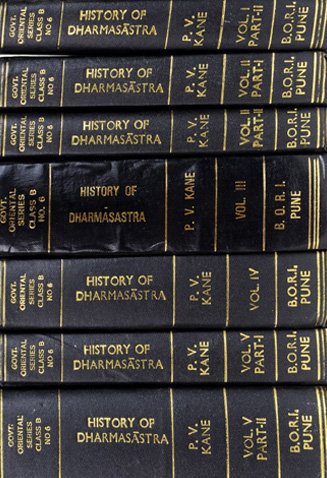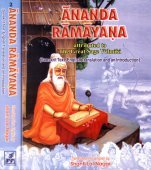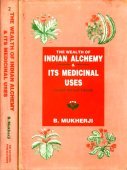Caitra, Caitrā: 22 definitions
Introduction:
Caitra means something in Buddhism, Pali, Hinduism, Sanskrit, Marathi, Hindi. If you want to know the exact meaning, history, etymology or English translation of this term then check out the descriptions on this page. Add your comment or reference to a book if you want to contribute to this summary article.
Alternative spellings of this word include Chaitra.
In Hinduism
Purana and Itihasa (epic history)
Source: archive.org: Shiva Purana - English Translation1) Caitra (चैत्र) is the name of a leader of Gaṇas (Gaṇapa or Gaṇeśvara or Gaṇādhipa) who came to Kailāsa, according to the Śivapurāṇa 2.1.20. Accordingly, after Śiva decided to become the friend of Kubera:—“[...] The leaders of Gaṇas revered by the whole world and of high fortune arrived there. [...] Kāṣṭhāgūḍha, Sukeśa and Vṛṣabha each with sixty-four crores. Caitra, Nakulīśa and Svayamprabhu each with seven crores. [...]”.
These [viz., Caitra] and other leaders of Gaṇas [viz., Gaṇapas] were all powerful (mahābala) and innumerable (asaṃkhyāta). [...] The Gaṇa chiefs and other noble souls of spotless splendour eagerly reached there desirous of seeing Śiva. Reaching the spot they saw Śiva, bowed to and eulogised him.
2) Caitra (चैत्र) or Caitramāsa refers to the “month of March-April”, according to the Śivapurāṇa 2.3.5.—Accordingly, as Brahmā narrated to Nārada the birth of Menā’s daughter:—“[...] The beloved of the mountain worshipped the Goddess along with Śiva, joyously. She gave charitable gifts always to the brahmins for their satisfaction. Desirous of obtaining a child, she worshipped Śivā everyday for twenty-seven years beginning it in the month of March-April [i.e., caitra-māsa]. Observing a fast on the eighth day of the lunar fortnight, she made charitable gifts of sweets, offerings of oblation rice cakes, puddings and fragrant flowers on the ninth day. [...]”.
Source: Cologne Digital Sanskrit Dictionaries: The Purana Index1a) Caitra (चैत्र).—One of the nine sons of Svārociṣa-Manu.*
- * Brahmāṇḍa-purāṇa II. 36. 19; Viṣṇu-purāṇa III. 1. 12.
1b) A Paulastya and a sage of the Tāmasa Manvantara.*
- * Brahmāṇḍa-purāṇa II. 36. 48.
2) Caitrā (चैत्रा).—The wife of Jyāmagha; gave birth to Vidarbha.*
- * Matsya-purāṇa 44. 32 and 36.

The Purana (पुराण, purāṇas) refers to Sanskrit literature preserving ancient India’s vast cultural history, including historical legends, religious ceremonies, various arts and sciences. The eighteen mahapuranas total over 400,000 shlokas (metrical couplets) and date to at least several centuries BCE.
Dharmashastra (religious law)
Source: Shodhganga: A Study of the asvalayana srauta sutra with reference to the principal sacrificesCaitra (चैत्र).—The spring season starts in the month of Caitra. In the Āśvalāyana-śrautasūtra it is mentioned that a Brāhmaṇa can establish the sacred fires on the Parva day in the spring season

Dharmashastra (धर्मशास्त्र, dharmaśāstra) contains the instructions (shastra) regarding religious conduct of livelihood (dharma), ceremonies, jurisprudence (study of law) and more. It is categorized as smriti, an important and authoritative selection of books dealing with the Hindu lifestyle.
Jyotisha (astronomy and astrology)
Source: Wisdom Library: Brihat Samhita by VarahamihiraCaitra (चैत्र) refers to the lunar month corresponding to March-April (when the full moon is in the constellation of Citra), according to the Bṛhatsaṃhitā (chapter 5), an encyclopedic Sanskrit work written by Varāhamihira mainly focusing on the science of ancient Indian astronomy astronomy (Jyotiṣa).—Accordingly, “If there should be both lunar and solar eclipses in one month, princes will suffer both from dissensions among their own army and from wars. [...] If the eclipses should fall in the lunar month of Caitra painters, writers, singers, prostitutes, men learned in the Vedas and dealers in gold, the people of Pauṇḍra, of Auḍra, of Kekaya and of Āśmaka will suffer distress and there will be good rain throughout the land”.
Source: Wikibooks (hi): Sanskrit Technical TermsCaitra (चैत्र).—The name of the first month of the year. Note: Caitra is a Sanskrit technical term used in ancient Indian sciences such as Astronomy, Mathematics and Geometry.

Jyotisha (ज्योतिष, jyotiṣa or jyotish) refers to ‘astronomy’ or “Vedic astrology” and represents the fifth of the six Vedangas (additional sciences to be studied along with the Vedas). Jyotisha concerns itself with the study and prediction of the movements of celestial bodies, in order to calculate the auspicious time for rituals and ceremonies.
Ayurveda (science of life)
Nighantu (Synonyms and Characteristics of Drugs and technical terms)
Source: Wisdom Library: Raj NighantuCaitra (चैत्र) is the first month of the “spring season” (vasanta) in the traditional Indian calendar, according to the second chapter (dharaṇyādi-varga) of the 13th-century Raj Nighantu or Rājanighaṇṭu (an Ayurvedic encyclopedia). The physician (bhiṣaj) should pay attention to the seasonal (ṛtu) factor in the use of medicinal drugs. Accordingly, “the bulbous roots in winter season (viz., Caitra), other roots in cold season and flowers during spring season are supposed to contain better properties. The new leaves or shoots in summer and the drugs, which grow in mud, like Lotus etc., should be used in autumn season”.
Unclassified Ayurveda definitions
Source: Ancient Science of Life: Snake bite treatment in Prayoga samuccayamCaitra (चैत्र) refers to the month corresponding to March-April, during which time snakes are born with evil habits, according to the 20th century Prayogasamuccaya (one of the most popular and widely practised book in toxicology in Malayalam).—According to the month in which they hatch, their characters differ. In that, the snakes born in caitra month (March- April) will have evil habits, those in dhanu (Dec- Jan) month will be strong and energetic, the ones in makara (Jan- Feb) month will be more poisonous than others. Snakes open their eyes on the 7th day after hatching and take further five days more to gain consciousness and to teeth. In another 30 days, they become poisonous.

Āyurveda (आयुर्वेद, ayurveda) is a branch of Indian science dealing with medicine, herbalism, taxology, anatomy, surgery, alchemy and related topics. Traditional practice of Āyurveda in ancient India dates back to at least the first millenium BC. Literature is commonly written in Sanskrit using various poetic metres.
Vaishnavism (Vaishava dharma)
Source: Pure Bhakti: Arcana-dipika - 3rd EditionCaitra (चैत्र), corresponding to “March-April”, refers to one of the months (māsa) in the Vedic calendar.—There are twelve months in a Vedic lunar calendar, and approximately every three years, there is a thirteenth month. Each month has a predominating deity and approximately corresponds with the solar christian months. [...] In accordance with the month of the year, one would utter the Vedic month, for example, caitra-māsi.
The presiding deity of Caitra is Viṣṇu.

Vaishnava (वैष्णव, vaiṣṇava) or vaishnavism (vaiṣṇavism) represents a tradition of Hinduism worshipping Vishnu as the supreme Lord. Similar to the Shaktism and Shaivism traditions, Vaishnavism also developed as an individual movement, famous for its exposition of the dashavatara (‘ten avatars of Vishnu’).
In Buddhism
Tibetan Buddhism (Vajrayana or tantric Buddhism)
Source: archive.org: The Indian Buddhist IconographyCaitra (चैत्र) (presided over by Nairṛti) is the first of twelve months, as commonly depicted in Buddhist Iconography, and mentioned in the 11th-century Niṣpannayogāvalī of Mahāpaṇḍita Abhayākara.—Accordingly, there are altogether twelve months [viz., Caitra] having twelve deities as given in the kālacakra-maṇḍala.—“here they are all accompanied with their Śaktis, mostly four-armed and have their distinctive vehicles”.

Tibetan Buddhism includes schools such as Nyingma, Kadampa, Kagyu and Gelug. Their primary canon of literature is divided in two broad categories: The Kangyur, which consists of Buddha’s words, and the Tengyur, which includes commentaries from various sources. Esotericism and tantra techniques (vajrayāna) are collected indepently.
Languages of India and abroad
Marathi-English dictionary
Source: DDSA: The Molesworth Marathi and English Dictionarycaitra (चैत्र).—m (S) The name of the first month, March-April.
--- OR ---
caitrā (चैत्रा).—a Relating to the month caitra.
Source: DDSA: The Aryabhusan school dictionary, Marathi-Englishcaitra (चैत्र).—m The name of the first month, March-April.
--- OR ---
caitrā (चैत्रा).—a Relating to caitra.
Marathi is an Indo-European language having over 70 million native speakers people in (predominantly) Maharashtra India. Marathi, like many other Indo-Aryan languages, evolved from early forms of Prakrit, which itself is a subset of Sanskrit, one of the most ancient languages of the world.
Sanskrit dictionary
Source: DDSA: The practical Sanskrit-English dictionaryCaitra (चैत्र).—[ci ṣṭraṇ; citrameva svārthe aṇ; citrāyāṃ bhavaḥ aṇ vā]
1) Name of a lunar month in which the full moon stands in the constellation Chitrā (corresponding to MarchApril).
2) A Buddhist mendicant.
3) One of the seven ranges of mountains dividing the continent into Varṣas.
-tram A temple, monument for the dead.
Derivable forms: caitraḥ (चैत्रः).
Source: Cologne Digital Sanskrit Dictionaries: Shabda-Sagara Sanskrit-English DictionaryCaitra (चैत्र).—m.
(-traḥ) 1. The month Chaitra or Cheyte, (March-April.) 2. One of the ranges of mountains dividing the continent into portions or Varshas: see varṣa. 3. A Baud'dha or Jaina religious mendicant. 4. The son Budha by Chitra. n.
(-traṃ) 1. A monument erected to the dead, a column or block of wood, a tree, &c. so considered. 2. 2. A small temple. E. citrā the star, or citra wonderfull, &c. affix aṇ, or ci-ṣṭran .
Source: Cologne Digital Sanskrit Dictionaries: Benfey Sanskrit-English DictionaryCaitra (चैत्र).—i. e. citra and citrā + a, I. adj. 1. Made of a tree called citra, Mahābhārata 7, 76. Ii. m. The name of a month, March
— April, [Mānavadharmaśāstra] 7, 182. Iii. f. trī, The day of the full-moon in this month, Mahābhārata 12, 3691.
Source: Cologne Digital Sanskrit Dictionaries: Cappeller Sanskrit-English DictionaryCaitra (चैत्र).—[masculine] [Name] of a month in spring.
Source: Cologne Digital Sanskrit Dictionaries: Monier-Williams Sanskrit-English Dictionary1) Caitra (चैत्र):—m. Name of the 2nd spring month (its full moon standing in the constellation Citrā cf. [Pāṇini 4-2, 23]), [Śāṅkhāyana-brāhmaṇa xix, 3; Kātyāyana-śrauta-sūtra; Lāṭyāyana; Manu-smṛti vii, 182; Mahābhārata] etc.
2) the 6th year in the cycle of Jupiter, [Varāha-mihira’s Bṛhat-saṃhitā viii, 8]
3) a, [Buddhist literature] or Jain religious mendicant, [cf. Lexicographers, esp. such as amarasiṃha, halāyudha, hemacandra, etc.]
4) a common Name for any man (like Deva-datta), [Gauḍap. on Sāṃkhyakārikā 5 and 7; Prabodha-candrodaya iii, 7/8 [Scholiast or Commentator]; Pāṇini 2-3, 29 [Scholiast or Commentator]] (not in [Kāśikā-vṛtti])
5) ‘son of Citrā’, Name of a son of Budha and grand father of Su-ratha, [Brahma-purāṇa]
6) = caitriyāyaṇa, [Anukramaṇikā on Kāṭhaka xxxix, 14]
7) Name of two Ṛṣis, [Viṣṇu-purāṇa iii, 1, 12 and 18]
8) one of the seven ranges of mountains (dividing the continent into Varṣas), [cf. Lexicographers, esp. such as amarasiṃha, halāyudha, hemacandra, etc.]
9) n. = caitya, a sepulchre, [cf. Lexicographers, esp. such as amarasiṃha, halāyudha, hemacandra, etc.]
10) a sanctuary, [cf. Lexicographers, esp. such as amarasiṃha, halāyudha, hemacandra, etc.]
11) mfn. for citra (B) or jaitra ([Scholiast or Commentator]), [Mahābhārata vii, 76]
Source: Cologne Digital Sanskrit Dictionaries: Yates Sanskrit-English DictionaryCaitra (चैत्र):—(traḥ) 1. m. The month Chaitra. (March-April). n. A mounment.
Source: DDSA: Paia-sadda-mahannavo; a comprehensive Prakrit Hindi dictionary (S)Caitra (चैत्र) in the Sanskrit language is related to the Prakrit words: Caitta, Cetta.
[Sanskrit to German]
Sanskrit, also spelled संस्कृतम् (saṃskṛtam), is an ancient language of India commonly seen as the grandmother of the Indo-European language family (even English!). Closely allied with Prakrit and Pali, Sanskrit is more exhaustive in both grammar and terms and has the most extensive collection of literature in the world, greatly surpassing its sister-languages Greek and Latin.
Hindi dictionary
Source: DDSA: A practical Hindi-English dictionaryCaitra (चैत्र) [Also spelled chaitra]:—(nm) see [caita].
...
Kannada-English dictionary
Source: Alar: Kannada-English corpusCaitra (ಚೈತ್ರ):—[noun] the first month in the Hindu and Indian national calendars (approx. corresponding to March-April period).
Kannada is a Dravidian language (as opposed to the Indo-European language family) mainly spoken in the southwestern region of India.
See also (Relevant definitions)
Starts with (+17): Caitra-pavitra, Caitra-pavitraka, Caitrabhanava, Caitrabhavana, Caitradandika, Caitraduta, Caitraduti, Caitradvadashi, Caitraga, Caitragama, Caitragaumri, Caitragaura, Caitragni, Caitraka, Caitrakaccha, Caitrakuti, Caitrama, Caitramahatmya, Caitramasa, Caitranavami.
Full-text (+346): Caitravali, Ramanavami, Caitri, Caitrika, Citrika, Ashokashtami, Mohanaka, Kamamaha, Caitrasakha, Caitravati, Caitra-pavitra, Phalgunanuja, Kaladika, Ashrvina, Madhutsava, Kamasakha, Angarakadina, Caitta, Caitraka, Hanumajjayanti.
Relevant text
Search found 90 books and stories containing Caitra, Caitrā; (plurals include: Caitras, Caitrās). You can also click to the full overview containing English textual excerpts. Below are direct links for the most relevant articles:
Vakyapadiya of Bhartrihari (by K. A. Subramania Iyer)
Verse 3.14.492 < [Book 3 - Pada-kāṇḍa (14): Vṛtti-samuddeśa (On Ccomplex Formation)]
Verse 3.14.409 < [Book 3 - Pada-kāṇḍa (14): Vṛtti-samuddeśa (On Ccomplex Formation)]
Verse 3.14.211 < [Book 3 - Pada-kāṇḍa (14): Vṛtti-samuddeśa (On Ccomplex Formation)]
Vakyapadiya (study of the concept of Sentence) (by Sarath P. Nath)
5. Three Views on the Semantic Interpretation of Sentence < [Chapter 2 - Perspectives on the Concept of Sentence]
Manusmriti with the Commentary of Medhatithi (by Ganganatha Jha)
Verse 7.182 < [Section XIII - War]
Verse 3.278 < [Section XXII - Time for Śrāddha]
Verse 2.31 < [Section X - The ‘Naming Ceremony’ (nāmadheya)]
Warfare and Military System in Vedic Literature (by Rinki Deka)
Marching to War and Seasons < [Chapter 4 - Principles and Ethics related to the Warfare]
Shishupala-vadha (Study) (by Shila Chakraborty)
Proper time for war < [Chapter 6 - Principles of Warfare]
Marching time (towards the enemy) < [Chapter 1 - Concept of Vijigīṣu king]
The Matsya Purana (critical study) (by Kushal Kalita)
Part 2.1d - The Yādava Dynasty < [Chapter 3 - Historical aspects in the Matsyapurāṇa]
Part 4.2f - Madanadvādaśī-vrata < [Chapter 4 - Religious aspects of the Matsyapurāṇa]
Part 4.3b - Saubhāgyaśayana-vrata < [Chapter 4 - Religious aspects of the Matsyapurāṇa]
Related products


